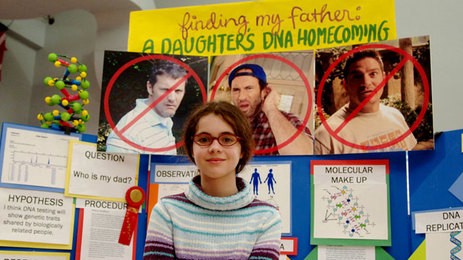How Gilmore Girls Do Money: April Nardini

“Okay,” April said. “The average college student graduates with $35,000 in student loan debt — which, by the way, means that I have a not-insignificant chance of graduating college with much more than $35,000 in debt; sure, there are scholarships and you can do cost comparisons and a couple years of community college, but let’s just say that the odds of me rolling a nat 20 on college debt are pretty small, and I should assume I have $35K in debt coming out. Minimum.”
She paused, and took a sip of the tea they had offered her when she entered the room. It was too hot, and too full, and sloshed over the side into the saucer when she set the cup down. Then she opened her notebook to a fresh page.
“So. There’s no way the entire $35K will be subsidized — sure, I’ll probably get close to the government maximum since I’m a first-generation college student from a single-parent household where my mom is barely turning a profit, but let’s assume that $30K of that loan will start earning interest from the first day I walk on campus.”
She paused. “No, that’s wrong. The entire $30K won’t start earning interest at once because I won’t take out my entire college loan burden in the first semester. Of course, since the average private college tuition is a little over $46,000 a year, the odds are that I’ll have to have to take out more than $30K in the first year — see “single-parent household where my mom is barely turning a profit,” above — unless I roll a nat 20, and…” April smiled. “Well, honestly, what are the odds of that?”
“So. Interest rates are speculative, and I’m using that word in all of its dictionary meanings here, but let’s say that, at minimum, I have $30K in debt earning interest almost from day one. I know that’s not quite how it works, but when you’re thinking about these kinds of large numbers it’s okay to treat the details as more of a rough sketch, to see what it might look like. Anyway, student loan interest rates are pretty variable, but 5 percent interest and a 10-year repayment plan seem to be a good starting point to work from, which means” — April did some quick math — “I’d pay an additional $8,183.59 over the life of the loan.”
She looked up. “That’s not actually that bad. It’s the cost of a used car, and I don’t see myself using anything but public transportation. Or my bike. But keep in mind that this represents a best-case scenario. Something an average student might end up with, theoretically. I’m not average. I’m not average because you invited me to this interview, and I’m not average because I will need much more than $35,000 to get through college. My mother has no money saved.” April smiled again. “She’s not really the plan-ahead type.”
She turned the page of her notebook. “In my situation, we’re looking at something much more like $120,000 in student loans, which is a conservative estimate given the average cost of private tuition, but I can’t imagine going through this process without getting at least one scholarship. $120,000 at 5 percent interest with a 10-year repayment comes to $32,734.34 in interest, but there’s no way that’s realistic because I’d be paying something like — 152,000 divided by 120 — $1,267 a month in loan payments, which is completely implausible on most entry-level salaries. So I’d have to consider a 20 or 30 year repayment, which would drive the interest up well past the cost of a used car. I could pay more than $200,000, total, for the privilege of going to college. More than $250,000.”
April closed her notebook. “And I’m not going to do that. You know exactly what I have to offer this school. You also know that I have made it my business to conduct independent scientific research on any topic that interests me, in a high school that offered very little in the way of academic support. I mean, we barely had a working microscope, and I figured out how to do DNA testing, and I didn’t need an academic system to get the answers I wanted.”
She sipped her tea again. It was almost cool enough to drink, now. “So I have no problem going to a local college and working in my mom’s store and making it on my own. If you want me to attend your school, I need a full scholarship. The math doesn’t work out any other way.”
Her hands itched to reach into her pocket, pull out her 20-sided die, and explain that Dungeons and Dragons wasn’t actually about rolling natural 20s; it was about making choices that would increase your odds of success regardless of the dice. But she knew that would be too much. So she sat still, looked at her interviewers, and waited for their response.
Previously on “How Gilmore Girls Do Money:” Dave Rygalski
Support The Billfold
The Billfold continues to exist thanks to support from our readers. Help us continue to do our work by making a monthly pledge on Patreon or a one-time-only contribution through PayPal.
Comments